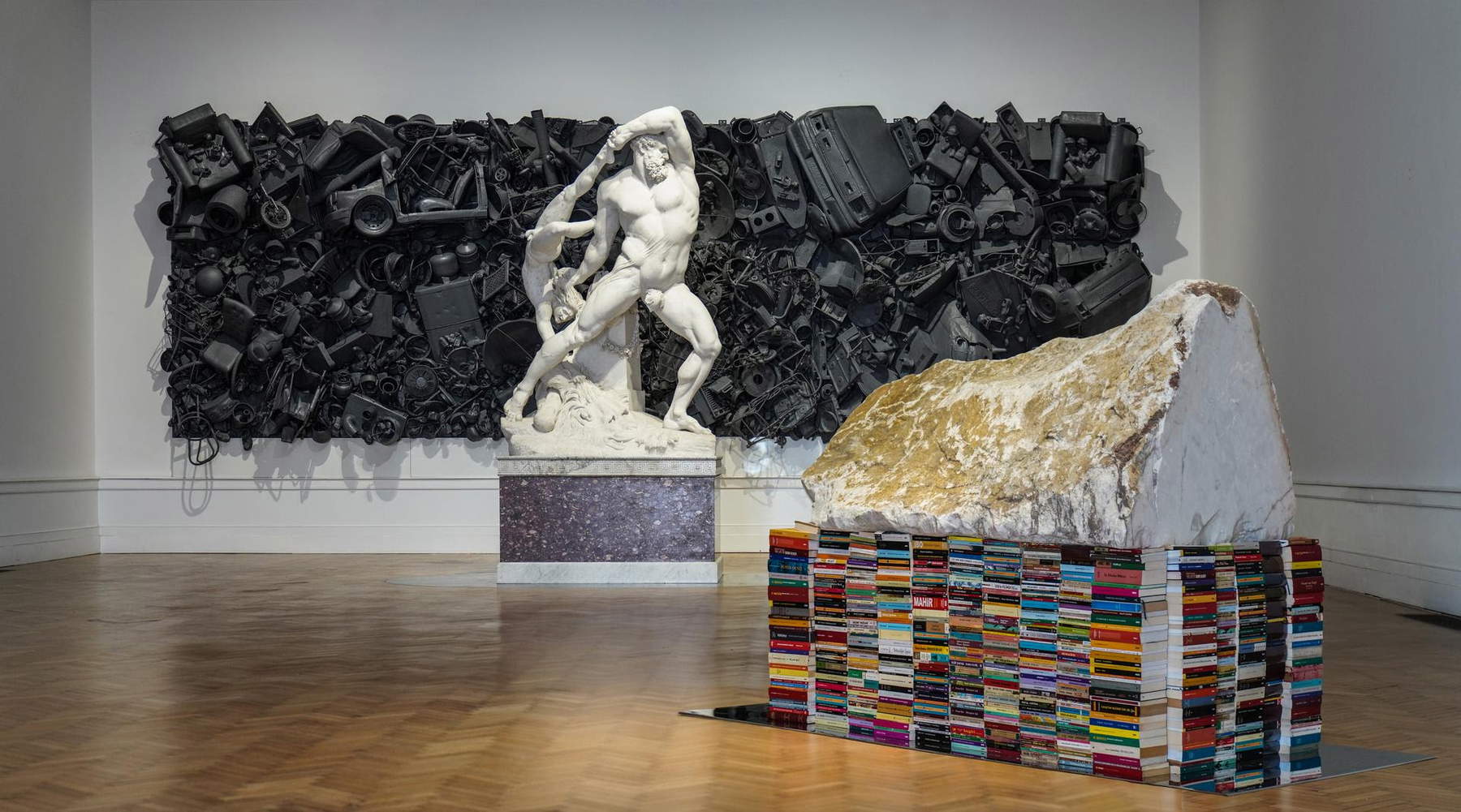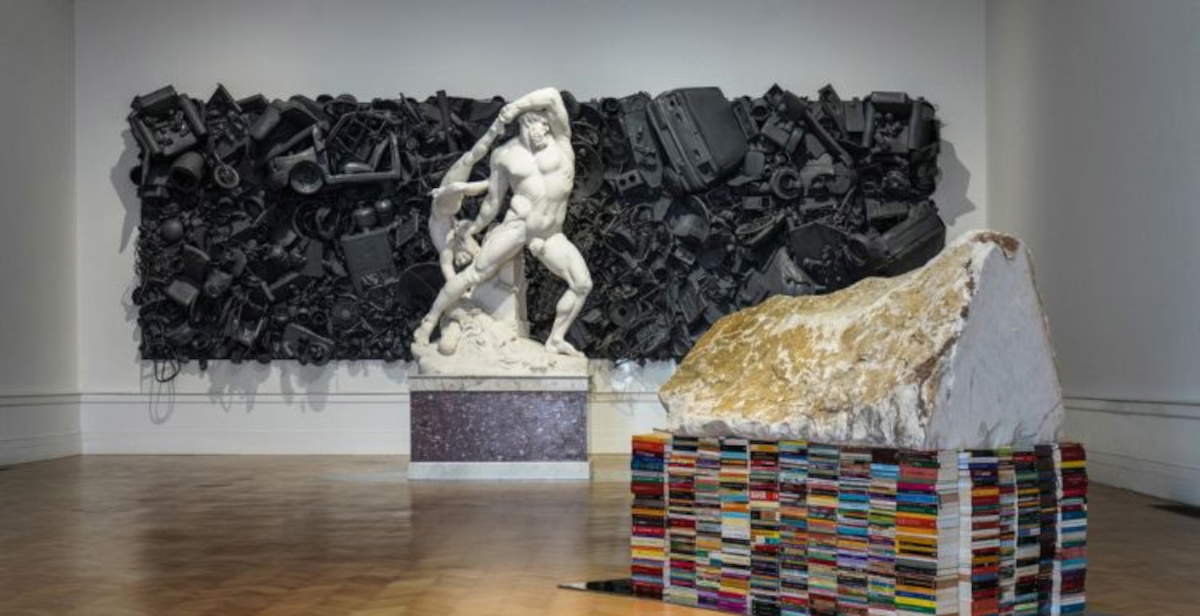From July 1 to Sept. 28, 2025, the National Gallery of Modern and Contemporary Art in Rome presents YOKTUNUZ(You Were Absent), a solo exhibition by Turkish artist Ahmet Güneştekin (Batman 1966), curated by Sergio Risaliti and Paola Marino, with organizational direction by Angelo Bucarelli. This is the first time that Güneştekin is exhibiting with a solo show inside the Roman museum, further consolidating the link with Italy, a country that will also host his Foundation, opening in 2026 in Palazzo Gradenigo, Venice.
The exhibition brings together sculptures, paintings and monumental installations that weave visual narrative and civic engagement, drawing inspiration from the history, myths and legends of Anatolian, Mediterranean and Mesopotamian civilizations. The choice of works and the exhibition design are designed to establish a close bond with the permanent masterpieces in the museum’s collection, creating a confrontation charged with aesthetic tension and symbolic meaning.
The conceptual core of the exhibition lies in memory, understood as a tool of resistance and testimony. Güneştekin’s artistic research focuses on the need to give voice to what is removed, forgotten or neglected by official accounts of history. Minorities, marginal identities, communities affected by collective trauma and invisible events impose themselves as concrete presences within an expressive language that combines formal rigor and narrative tension. Memory, in the artist’s work, becomes a political and poetic force, interrogating the present and its wounds.

Placed in the Gallery’s neoclassical hall, the work YOKTUNUZ visually and conceptually confronts Antonio Canova’s marble group Hercules and Lica, with the intention of amplifying dramatic tension through textural and chromatic contrast. Canova’s sculpture, carved with intense formal purity, is flanked by an enormous black composition measuring 12 meters in base by 4.5 meters in height, composed of hundreds of everyday objects. The fragments come partly from the rubble of Diyarbakir, a UNESCO heritage city that was the scene of clashes during the conflict between Turkey and the Kurdish population, and partly from the ruins of Hatay province, which was hit by the 2023 earthquake.
The monumentality of the installation and the nature of the materials used give rise to a collective mourning, which aims to go beyond geographical or political reference to become a universal representation of loss, destruction and absence. Individual and collective memory come together in an artistic form that imposes on the viewer an unpeaceful reflection that passes through the gaze and takes root in the body.
In addition to the installation, the exhibition includes a selection of works that continue to explore the major themes dear to the artist: exodus, migration, cultural and geographic boundaries, sense of community and religious contamination. The representations adopted by Güneştekin draw on ancient eras and cultures, restoring a layered vision of the Mediterranean as a space of encounter, conflict and exchange. The figurative references to the traditions of Anatolia and Mesopotamia are thus charged with new interpretations, made current by the subject matter and composition.
The polyphonic approach of the artist’s expressive language is imagined to hold together visual dimension, symbolic layering and political tension. The choice of the National Gallery of Modern and Contemporary Art as the venue for the exhibition is intended to take on additional value, placing Güneştekin’s art in relation to the great masters of the 19th and 20th centuries. In fact, the connection with the works in the permanent collection is intended as a precise desire to root the artist’s discourse in the fabric of Western art history, to emphasize affinities, divergences and convergences between different cultures.
 |
| Ahmet Güneştekin exhibits at the National Gallery: memory and identity in dialogue with the present |
Warning: the translation into English of the original Italian article was created using automatic tools. We undertake to review all articles, but we do not guarantee the total absence of inaccuracies in the translation due to the program. You can find the original by clicking on the ITA button. If you find any mistake,please contact us.